A Cat That Uses the Litter Box and Goes Back Again
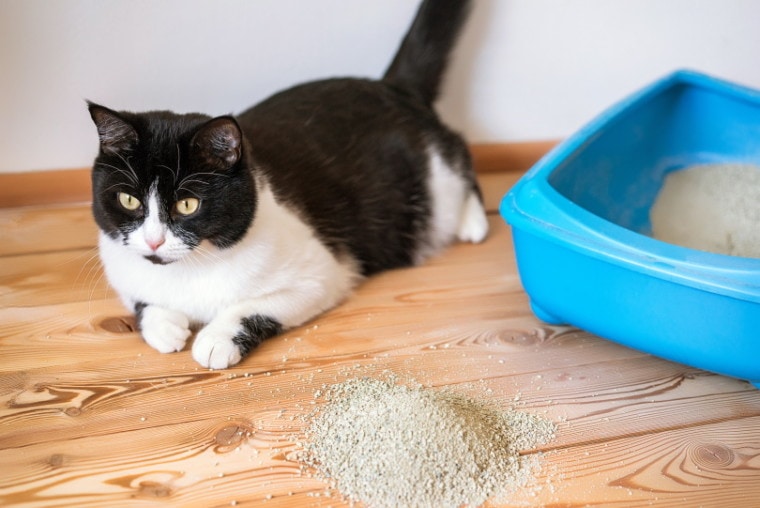
Litterbox bug are among the nigh common—and frustrating—cat behavior issues for owners. It can be challenging when your true cat eliminates outside of the box. The showtime stride in retraining your cat to employ the litterbox is to understand why your cat is going outside the box in the first place.

Why Do Cats Stop Using the Litterbox?
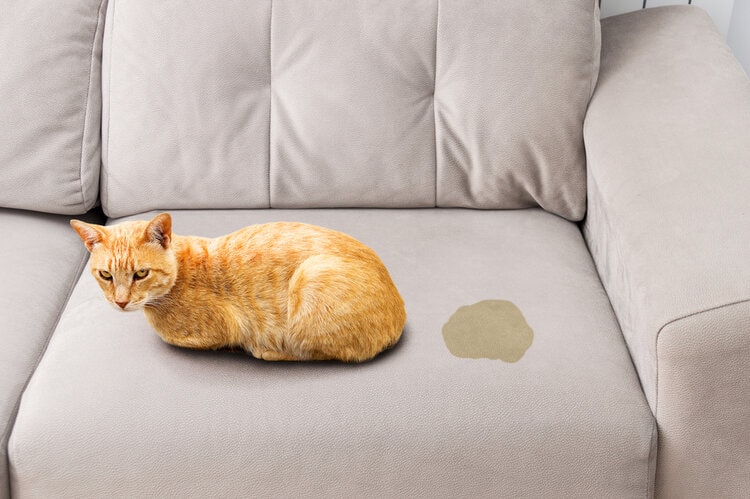
In that location are many reasons why a cat might stop using the litterbox. The most of import things to rule out are whatever potential health issues like constipation or urinary tract bug.
Exist sure to see your vet if your true cat is showing signs of pain or distress. Untreated urinary crystals or stones can lead to life-threatening blockages, especially in male cats.
Once yous rule out physical causes, the problem may exist very simple and easy to solve.
Reasons cats starting time going outside of the box:
- Your cat dislikes a new brand or type of litter
- A dominant cat bullies a submissive cat in the box area
- The litterbox is not cleaned oft enough
- Your true cat doesn't feel comfy going where you placed the box
- You have a multi-true cat dwelling with not enough litter boxes per cat
- A large true cat (like a Maine Coon) has outgrown a standard size box
Observe your cat's litterbox beliefs closely. Subsequently y'all've identified the well-nigh likely cause, how practise you retrain your cat to brainstorm using the box again?

The nine Piece of cake Steps to Retrain a True cat to Utilize the Litterbox
Before You lot Start
Keep in listen that the problem, even as you piece of work to solve it, might have caused your cat to develop negative associations with using the box.
Punishing or yelling at your cat for going exterior the box can make those bad feelings worse, then avoid any negative reinforcements when accidents occur.
The central to retraining your cat to use the litterbox again is to modify those negative feelings into positive ones. Here's how to brand using the box comfortable once again.
i. Find the right litterbox for your cat
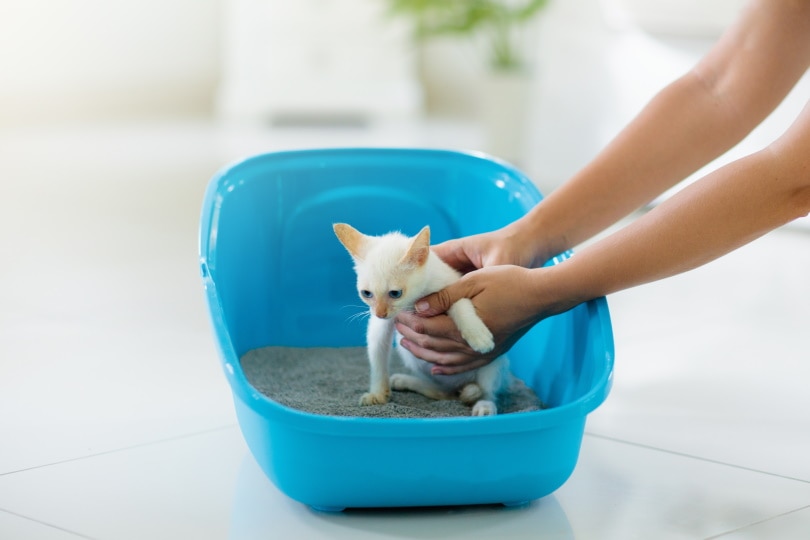
A litterbox should be i½ times the length of your true cat, measured from the nose to the base of operations of the tail. Big cats need big boxes. For kittens and senior cats, the sides need to exist depression enough for easy access.
Accept y'all switched from an open up box to a closed box? Did you get a self-cleaning box recently? Your cat may adopt one box style over another.
And well-nigh chiefly, get multiple litterboxes for a multi-cat household. Ane box per cat plus ane extra is platonic.
2. Find the right litter for your cat

There are many dissimilar types of kitty litter. Litter tin be made from materials similar clay, forest pellets, silica crystals, recycled paper pellets, walnut shells, and kokosnoot husks, just to name a few.
Your preferred type of litter may not exist your cat'southward favorite. Sometimes a cat volition develop an disfavor to the texture of a item kind of litter and prefer other surfaces like the rug or a tile floor.
You may take to experiment and purchase small containers of dissimilar types of litter until you observe the right one. Every cat is an individual, merely generally, cats prefer the feel of soft, finely textured litter.
Once you find the right litter, think non to overfill or underfill the box. Too much or too little litter can sometimes be an result.
3. Place the litterbox in a expert spot
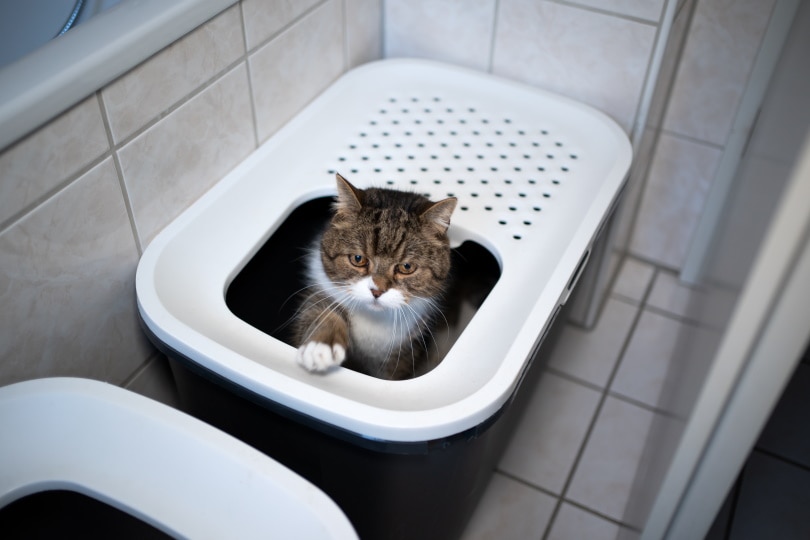
Litterbox placement can be an result for a shy cat in a busy, multi-pet household. If your true cat is timid, put the box in an easily accessible but tranquillity identify, away from heavily trafficked and noisy areas.
Avoid placing the box in an expanse where your cat will feel trapped or cornered if approached. Most cats like to see who's coming and how they can escape if they feel uncomfortable.
Good litterbox placement spots tin can include a basement or spare bathroom or bedroom. Bad litterbox places tend to be heavily used areas like the kitchen.
4. Keep the litterbox very clean
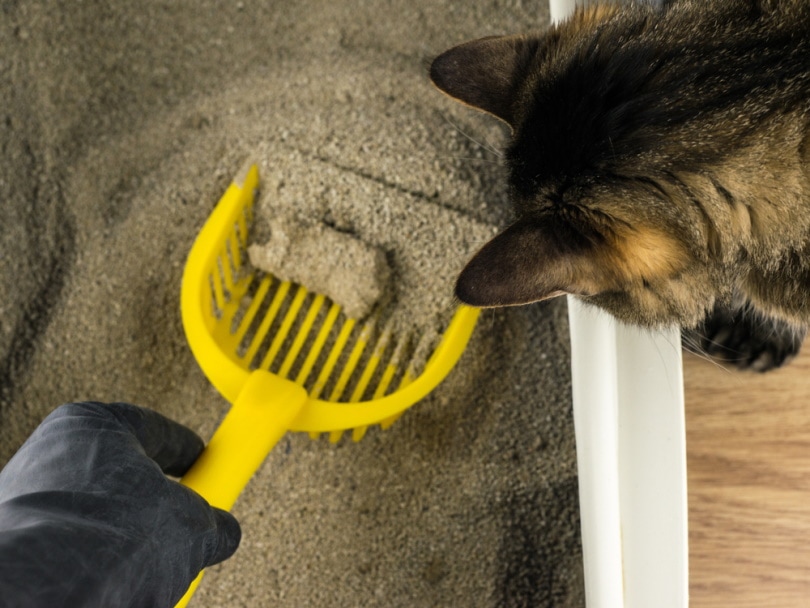
Non surprisingly, cats prefer clean litterboxes over dingy litterboxes. Cleaning the litterbox is not a fun chore, only information technology is essential, especially when your cat has litterbox problems.
Scoop out the poop and solid clumps (if you utilize clumping litter) at to the lowest degree once per day. You tin wipe downwardly the sides if they are messy also.
Alter the litter out completely at least once per week, merely more frequently if necessary.
Wash out the litterbox in one case every week using soap and water. Avoid harsh smelling cleaning agents like ammonia.
Be aware that many cats do not similar the feel of litterbox liners, and so it'south best not to use them.
five. Resolve conflicts between multiple cats
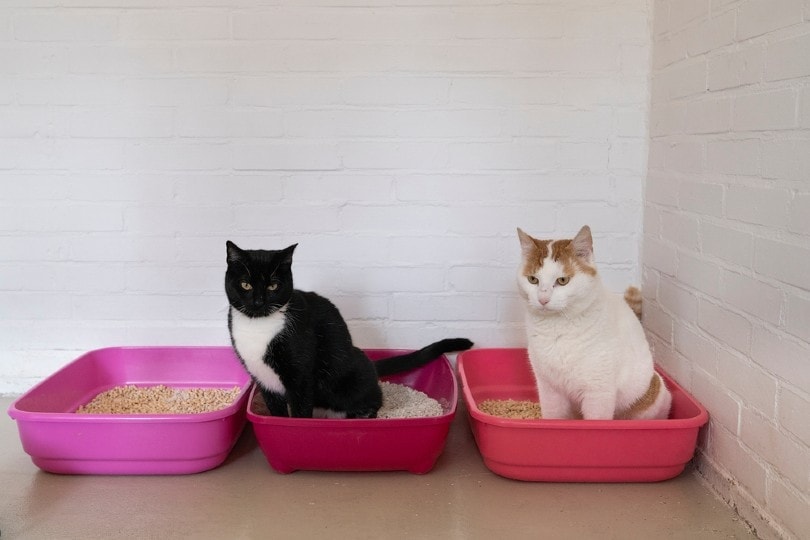
It's very common in multi-true cat households for one cat to exist ascendant and another to be submissive. Unfortunately, these power issues tin result in skirmishes at the litterbox and nutrient bowls.
1 of your cats may exist getting bullied or ambushed at the box. If this is the case, put a secondary box in the place where the shy cat likes to spend time.
Separation of litterboxes, food and water bowls, and favorite sleeping spots can be helpful in homes where at that place is a conflict between cats.
6. Try stress-relieving pheromones

There is some contend most the effectiveness of calming agents like pheromones or essential oils. Some owners swear by them, others have seen piffling effect.
You can endeavor stress-relieving pheromone sprays or diffusers in the litterbox area. The thought backside pheromones is that they replicate the comforting natural substance that cats excrete when they rub their faces on things.
Essential oils that are said to be constructive in calming cats include lavender, chamomile, geranium, and frankincense. Be sure to talk to your vet first and apply any essential oil production with care, as many oils are toxic to cats.
7. Thoroughly clean areas your cat has previously soiled
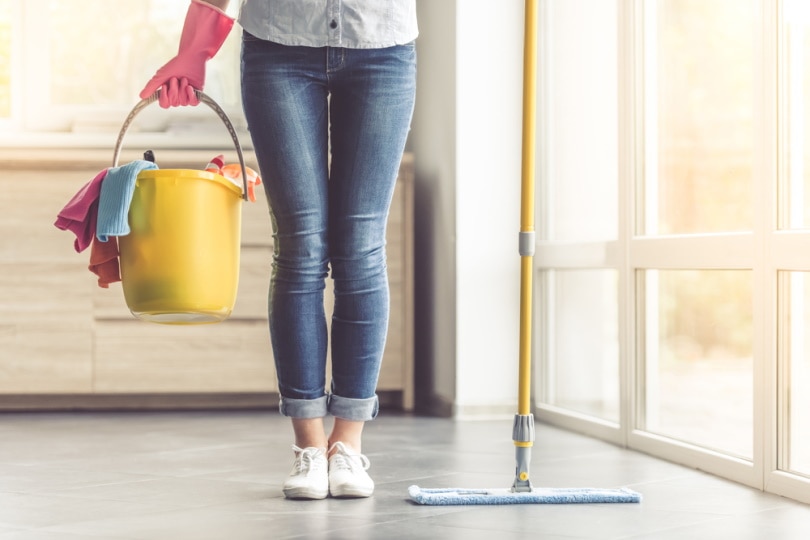
It's non uncommon for cats to return to a place in the home that they accept soiled earlier. You can discourage this by removing any trace of the odour.
The best way to do this is with an enzymatic cleaner. Enzymatic cleaners are peculiarly effective in cleaning urine. They break downward the uric acid into different components which then evaporate.
Other types of cleaners may seem to us like they clean and deodorize well, but your cat'south sensitive nose will still observe the urine.
8. Know the divergence between urine marking and going outside the box

Your true cat will squat when urinating outside the box; a true cat that odor marks his territory volition stand with his tail loftier and spray behind him.
Urine marking is not the same as eliminating outside of the box. The best solution for mark is to spay and neuter all your cats. You can also apply some of the aforementioned techniques we mentioned to solve conflicts between cats.
9. If all else fails, seek professional advice

Sometimes a cat's litterbox and other behavioral issues can be tough to solve. Don't be shy about talking to your vet or an creature behaviorist.
Your vet can prescribe medications for severe anxiety that may be contributing to your cat's litterbox issues. In that location are a variety of different drugs that y'all can attempt.
An brute behavior skilful has training and feel in behavior modification techniques and can help you to better understand and work with your cat.
Expect for Certified Practical Animal Behaviorists (CAABs) and Acquaintance Certified Practical Animal Behaviorists (ACAABs), every bit they accept advanced training in brute behavior, biology, and health.
Featured Image Credit: Tanya-Plotnikova, Shutterstock
saltauthermse2001.blogspot.com
Source: https://petkeen.com/how-to-retrain-cat-to-use-litterbox/
0 Response to "A Cat That Uses the Litter Box and Goes Back Again"
Post a Comment